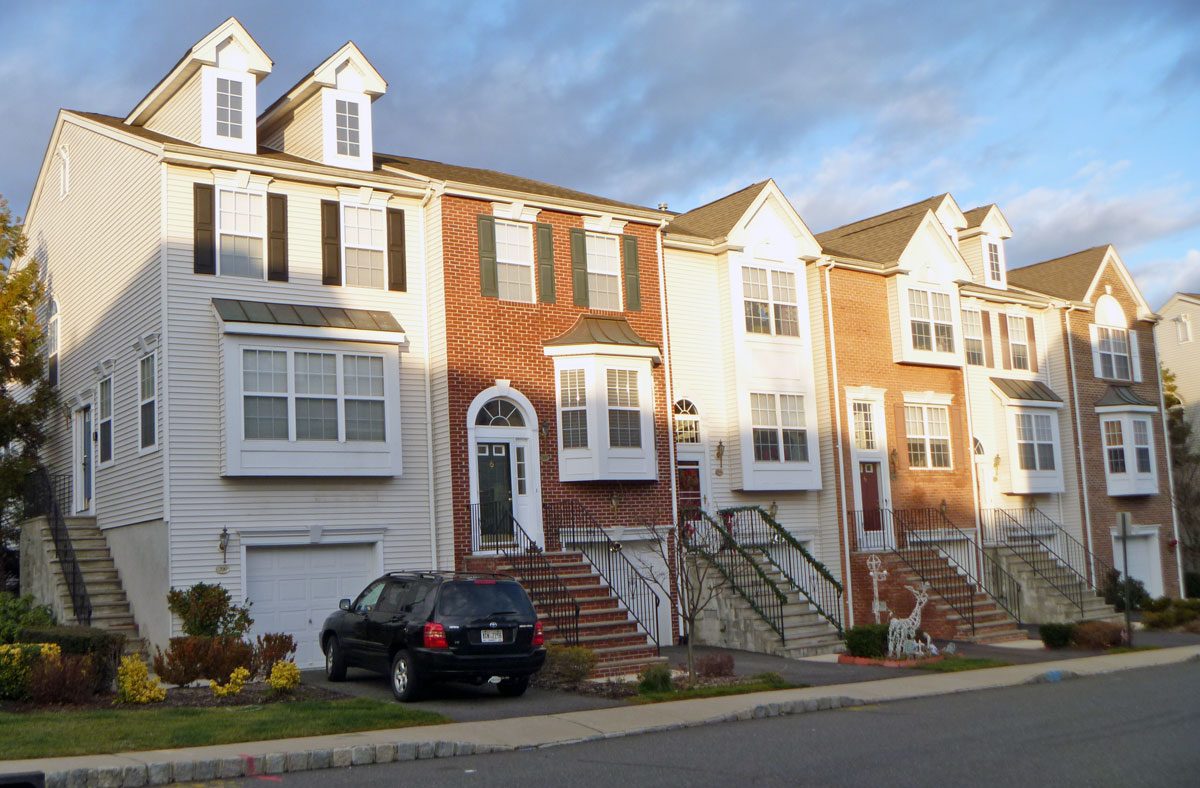When we investigate residential properties for our clients, occasionally we encounter a situation where no Weather-Resistive Barrier (often shortened to “WRB”) was ever installed behind the vinyl siding. WRB is a generic term that covers various types of materials including building paper, felt paper, house wrap, or a proprietary name such as Tyvek®. If our investigation is related to the acquisition of a property, missing WRB can raise concerns for the buyer… “is this a defect?”; “how could it have been installed without a weather barrier?”, and even: “should we walk away from this purchase?”.
Current residential building codes and standards require that a WRB is used behind vinyl siding, but to the surprise of many, that wasn’t always the case. If the exterior walls are found to be lacking a WRB, to know if the condition was a defect at the time of construction lies in when the property was built. While this article will go into the timeline in more detail, a general rule of thumb is this: If the building was constructed (or siding installed) in the 1990s, the walls may not have a WRB behind the vinyl siding, as the installation of same was merely a best practice at the time, but not a code requirement. If the property was constructed or the exterior walls were reclad in the early 2000s and later, the walls should have been wrapped in a WRB.
This article provides a general discussion of how relevant building codes and standards evolved shortly after Y2K.
Building Codes and Industry Standards
The installation of vinyl siding, like most other exterior cladding materials, will be governed by 1) building code; 2) industry standards, and; 3) manufacturer’s installation requirements. In this article, we’re going to explore the evolution of historical codes and standards.
Building Code
Many of our investigations relate to low-rise residential housing. As such, the International Residential Code[1] (“IRC”, “code”) provides the building code requirements for such projects, as opposed to the International Building Code (IBC). The IRC provides prescriptive requirements for how to install vinyl siding and contains a very clear difference between the 2003 edition and the 2006 edition for WRB installation behind vinyl siding. In this code, the requirements for a WRB behind specific wall claddings are depicted in an easy-to-read table, making the change related to the WRB behind vinyl siding very clear:
Figure 1: 2003 IRC, Table R703.4

Figure 2: 2006 IRC, Table R703.4

To summarize, homes constructed under the 2003 IRC or prior did not require the installation of a WRB, while homes constructed under the 2006 IRC or later do require the installation of a WRB.
Vinyl Siding Institute
The Vinyl Siding Institute (VSI) is a trade association that publishes an installation manual which, like other trade manuals, is periodically updated to reflect current installation practices. The change in requirement related to WRB’s is found between the 1999 edition and 2004 edition of the manual.
In the 1999 edition of the manual, the section entitled Preparing the Walls states the following:
“It is recommended that a weather-protective barrier, such as house wrap or felt paper, be applied to the house prior to the vinyl siding application”.[2]
In contrast, the 2004 edition of the manual, under IMPORTANT NOTES, contains a section entitled Weather Resistant Barrier, which begins the entire Important Notes section. The language under this section states the following:
“Vinyl siding has always been designed as an exterior cladding, not a weather resistant barrier. Vinyl siding is designed to allow the material underneath it to breathe; therefore, it is not a weather tight covering…. To achieve designed performance, vinyl siding must be installed over a weather-resistant barrier system that includes 1) a continuous weather resistant material and 2) properly integrated flashing around all penetrations and where vinyl siding interfaces other building products such as brick, stone, or stucco” [3] (emphasis added).
While specific manufacturer installation instructions are beyond the scope of this article, such installation instructions are often modeled after this industry-standard publication, as well as the ASTM standard described below.
ASTM Standard
ASTM [4] publishes a standard specific to the installation of vinyl siding, which is ASTM D4756. Like the building code and VSI, the ASTM standard evolved into requiring a WRB behind vinyl siding within the same time frame. In this article, we look at language from the 1996 edition of the standard, and then language from the subsequent 2006 edition.
Section 8 of the 1996 edition of ASTM D4756, entitled Substrate, Surface Preparation, makes no reference to the use of a weather resistive barrier. Rather, this edition of the standard opens up with the following language:
“8.1 Apply vinyl siding directly over sheathing or other solid surface that is in an even plane.” [5]
However, Section 8 of the 2006 edition, still entitled Substrate, Surface Preparation, opens up with the following language:
“Weather-resistant Barrier – Vinyl siding must be installed over a weather resistant barrier system that includes (1) a continuous weather-resistant material, and (2) properly integrated flashing around all penetrations and where vinyl siding interfaces with other building products.” (emphasis added)
Note the similarity between the 2006 edition of the ASTM standard and the 2004 edition of the VSI installation manual.
What To Do If Your Building Lacks a WRB
This article has provided a brief synopsis of how the requirement for a WRB evolved in the late 1990s and early 2000s. If your building was constructed pre-2000, and you discover that the exterior walls lack a weather resistive material behind the vinyl siding, you will now understand that such a component, which is required today, was not required at the time of construction. That being said, the building code and industry standards (as well as manufacturer installation instructions) changed for good reason: installing a weather resistive material behind the vinyl siding greatly reduces the probability of water infiltration.
If a building owner discovers that their building lacks a weather resistive material behind the vinyl siding, the next step will be to perform an investigation of the exterior walls to determine if water damage is present. Such an investigation may include any or all of the following:
- Interior surveys to identify evidence of water infiltration at the building interior;
- Infrared thermography to identify heat anomalies that may represent areas of water damage;
- A deconstructive examination at the exterior, which may include removing portions of siding around select windows, penetrations and other critical details.
If evidence of water infiltration is found during the investigation, then a repair scope would be developed and implemented to address areas of water damage and to install a weather resistive barrier. If it appears that no evidence of water damage is found and that the exterior walls are performing as intended, despite not having a weather resistive material, then widespread repair work to install a weather resistive barrier may be able to be postponed until the vinyl siding is replaced at the end of its useful life, depending on when that may be.
Such investigations and repair scope determinations should be performed in conjunction with experienced building envelope experts, such as those located nationwide within VERTEX.
To learn more about VERTEX’s Forensic Consulting services or to speak with a Forensic Engineering Expert, call 888.298.5162 or submit an inquiry.
Reference
- [1] The IRC is the building code that regulates the construction of single-family houses, two-family houses (duplexes), and buildings consisting of three or more townhouse units. For the purpose of the code, a townhouse unit can generally be described as a unit with a shared side wall or walls, with no other units above, below, in front, or behind.
- [2] Vinyl Siding Installation Manual; A How-To Guide; 1999 Edition; Vinyl Siding Institute; p. 16.
- [3] Vinyl Siding Installation Manual; Updated October 2004; Vinyl Siding Institute; p. 2
- [4] ASTM International, formerly known as the American Society for Testing and Materials, is an international standards organization that develops and publishes voluntary consensus technical standards for a wide range of materials, products, systems, and services.
- [5] ASTM D4756-96; ASTM International; p. 3




